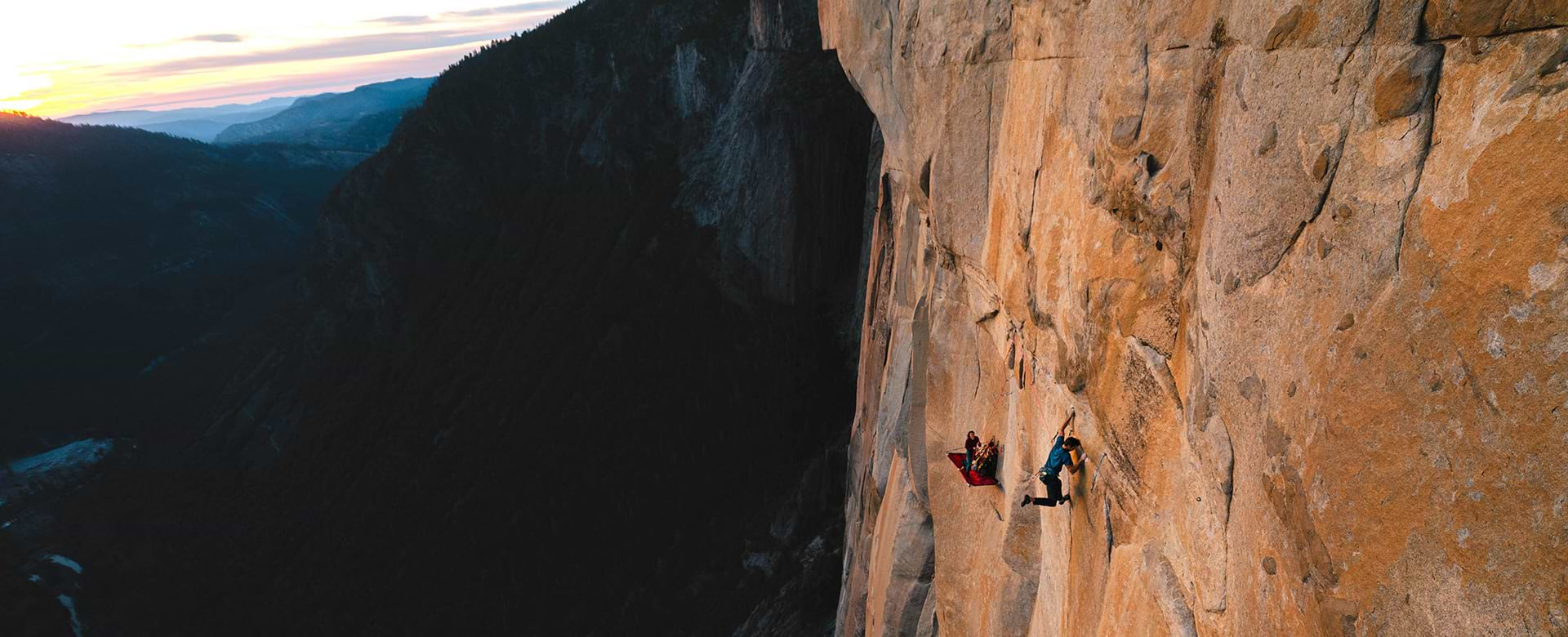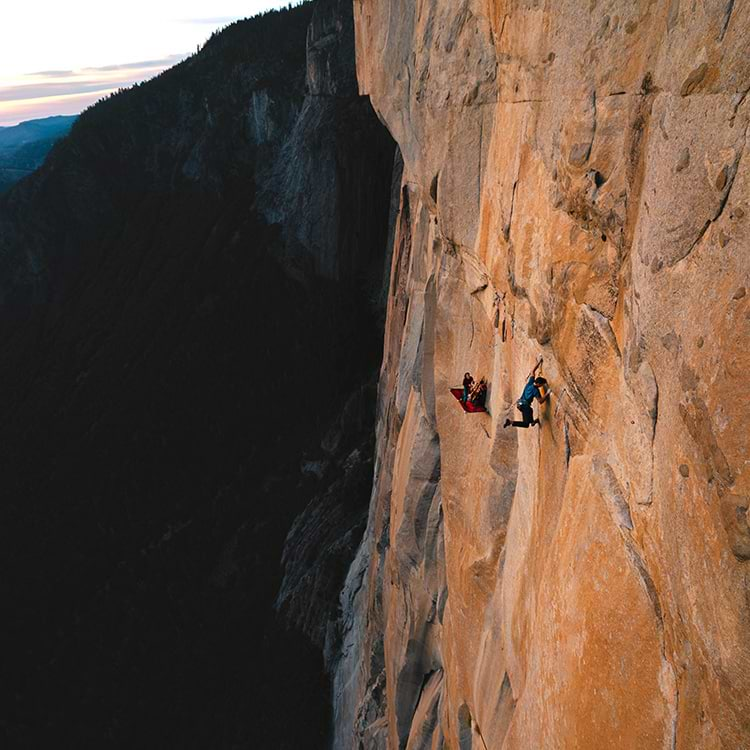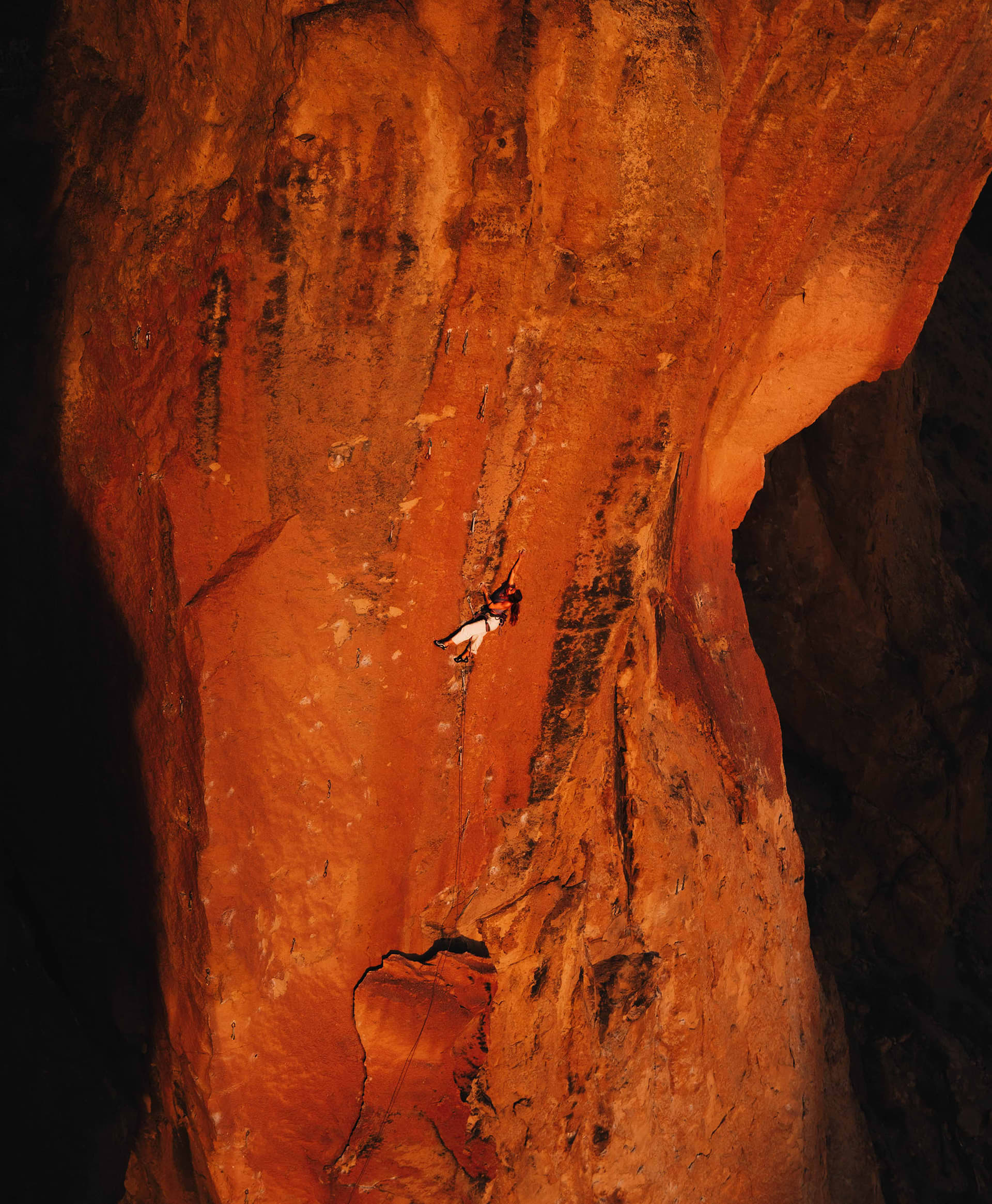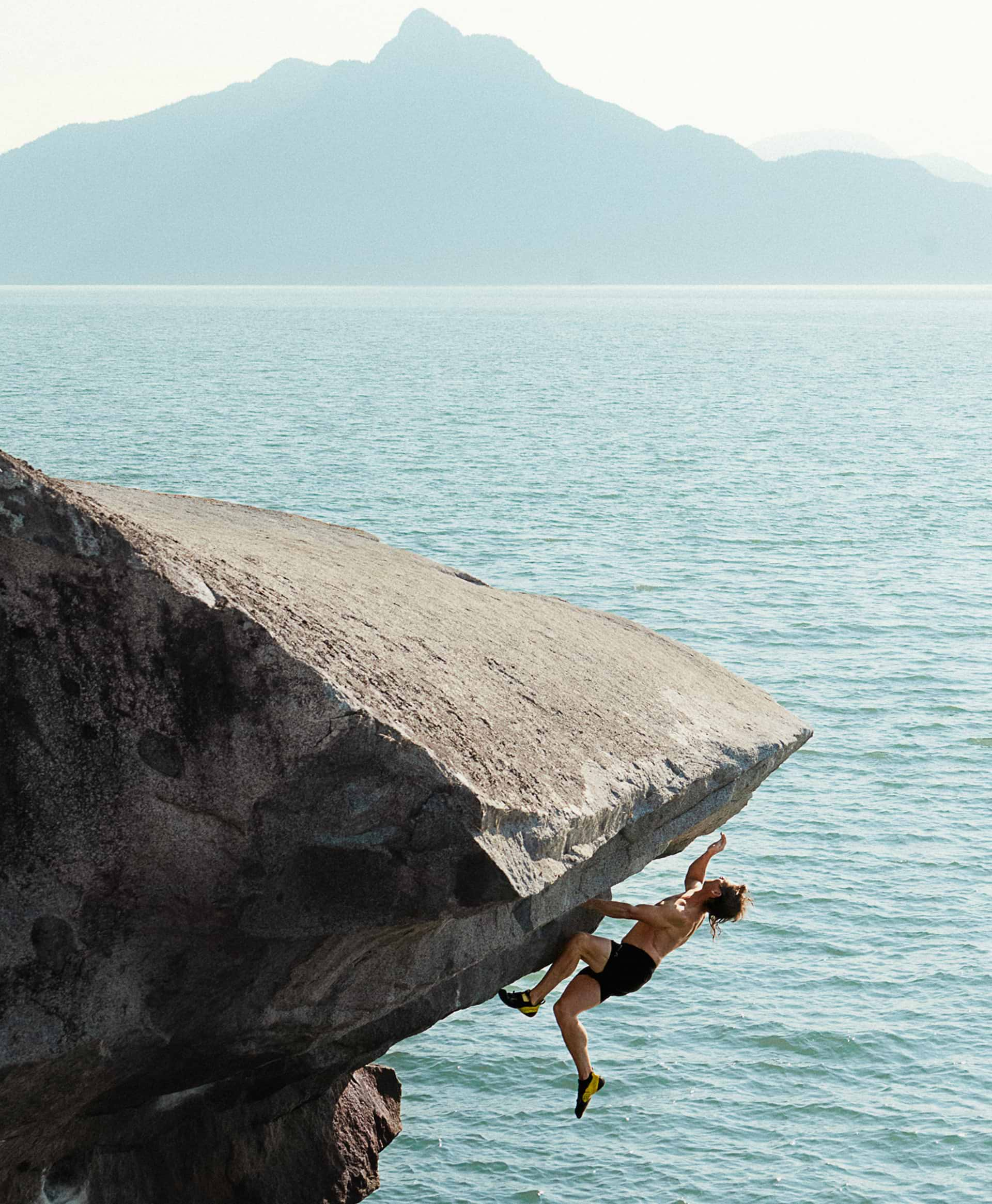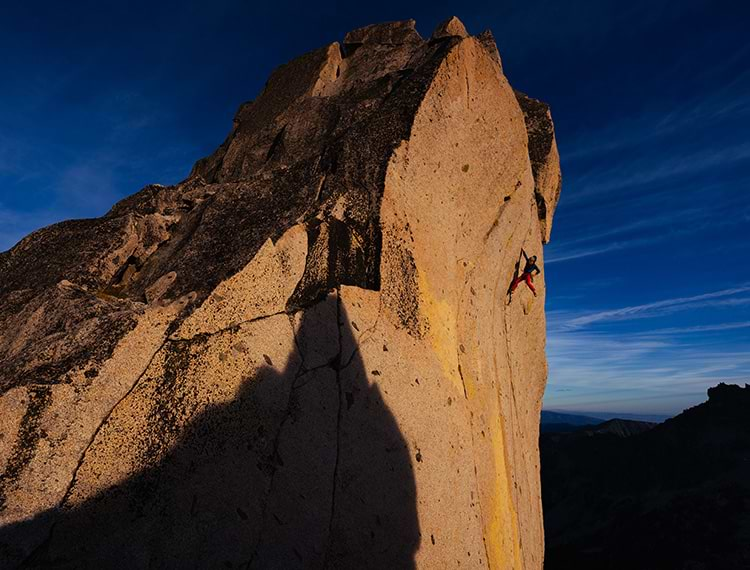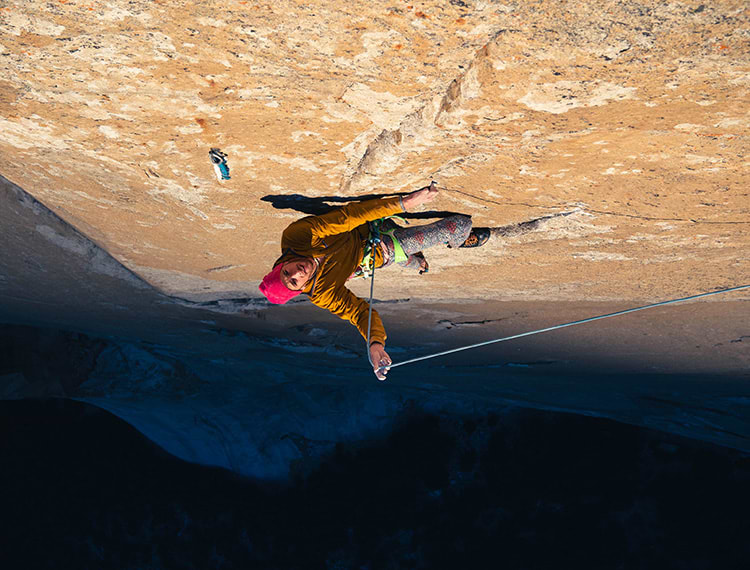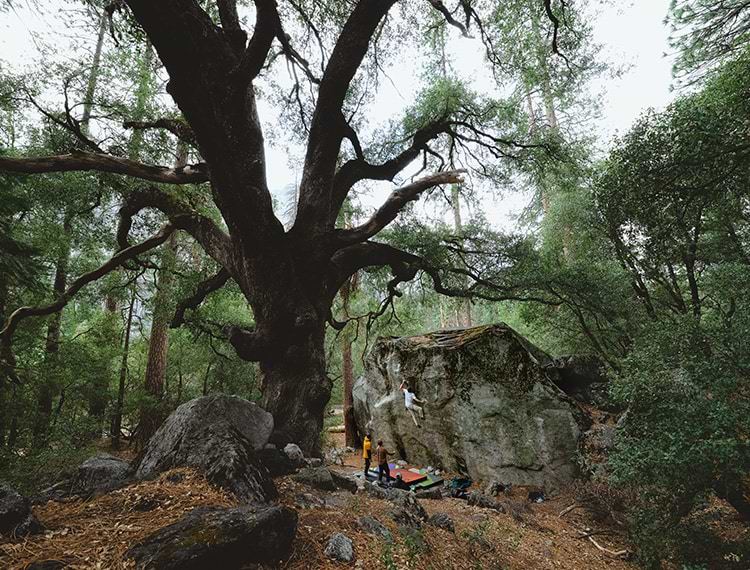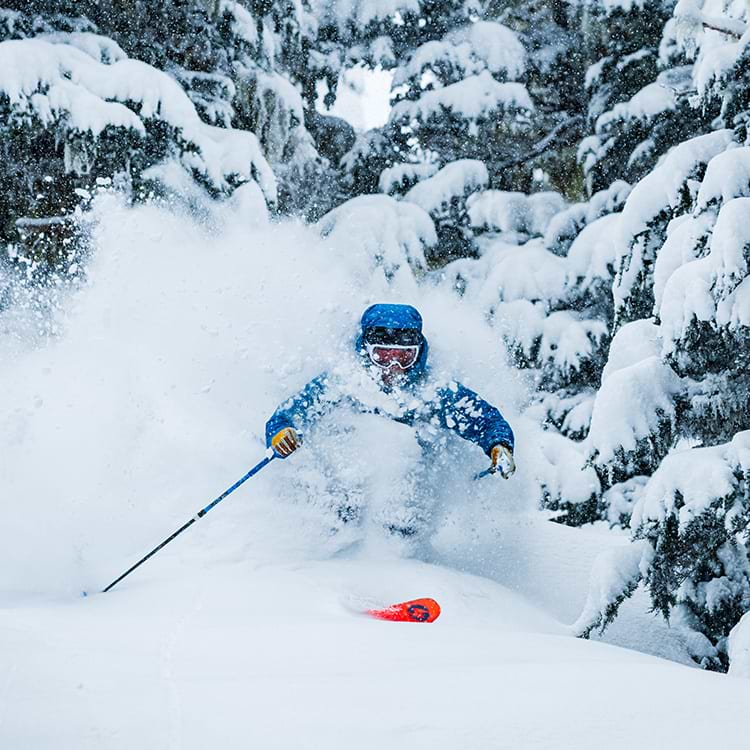There is a moment when the world distills to a single breath, a single move, a singularity of existence. Your fingers search the stone for purchase. A whisper of wind dances through the canyon, reminding you how high you’ve climbed, how far you still have to go. There is no room for anything but the next hold. Your thoughts dissolve. This is climbing: a meditation, a battle, a love affair.
You don’t remember how it started, this urge to look up and envision yourself on higher ground. It could have been during a childhood family hike, on your first mountain vacation, or while watching a rock-climbing movie with friends. That’s because it has always been there. No one has to teach a kid how to climb a tree–humans are natural-born climbers.
Rock climbing is a language spoken through muscle and bone, with fingertips tracing natural history in granite, dolomite, and sandstone. It is the poetry of movement, a communion with parts of the earth that have existed long before us and will remain long after we are gone. We are temporary, but the mountains endure. To climb is to become part of the earth’s remarkable story, even if only for a fleeting moment.
The first time you climb – on rock, ice, or in a gym – the experience is raw and wild, a rush of adrenaline and uncertainty. Your body is rigid, and your mind overthinks every move. You feel your fragility, the precarious nature of your existence against the expanse of stone. But then, somewhere in the repetition of movement, a shift occurs. The rock is no longer an adversary; it becomes a partner in your ascent, a guide rather than an obstacle. Your hands memorize its edges, and your feet learn to trust its friction. Fear transforms into focus. Doubt becomes determination. And in that transformation, something else is born: belonging.
Climbing is not merely a sport but a way of seeing and being. It teaches patience, resilience, and the art of failing with grace. You learn to embrace the fall, trust the rope, and recognize that success is not always about reaching the top but about the effort it takes to try. Some climbs will break you. Some routes will humble you. Walls will force you to question your limits. And yet, you return—repeatedly—because climbing is a love that does not wane.
Perhaps the most incredible lesson climbing offers is presence. In a world that demands our constant attention, climbing requires something different: singular focus. The distractions of daily life vanish when you are suspended hundreds of feet above the ground, relying solely on your strength and your partnership with your belayer. It is here, in this suspended space between earth and sky, that clarity emerges. Every problem, every worry, every deadline fades beneath the immediacy of the climb. Here, you are nothing more and nothing less than alive.
Part of the beauty of climbing lies in its variety. There are sunbaked desert sandstone towers that remind you to climb with reverence. There are glaciated peaks where ice glistens in blue and ephemeral forms, daring you to defy the elements. There are overhung boulders that require precise yet explosive movement, and long alpine ridges where endurance is the only way forward. Each climb tells its story, and each route offers a different conversation between humans and mountains.
But climbing is not just about rock and ice; it is about community. It is the shared silence at a belay station, the mutual respect and understanding between partners who have entrusted each other with their lives. It is the laughter at the base of the crag, the collective breath held as a friend makes a daring move, and the camaraderie of aching hands wrapped around cups of coffee in the early morning light. Climbing is a bond.
There are those who ask why we climb and seek challenges in the high and lonely places of the world. The answer is simple yet impossible to fully explain with words. We climb because it makes us feel more like ourselves. Because somewhere between the base and the summit, we are reminded of what is true. Because the rock does not care for ego, does not judge or concede—it simply exists, waiting for those willing to engage with it on its terms. And in that engagement, we sometimes discover pieces of ourselves we never knew were missing.
So we climb. We tie in, take a deep breath, and step off the ground, knowing that for a brief moment, we will touch something vast and unyielding. We understand that the view will always be worth it when we reach the top, whether of a boulder problem, a towering face, or simply our perceived limits.
